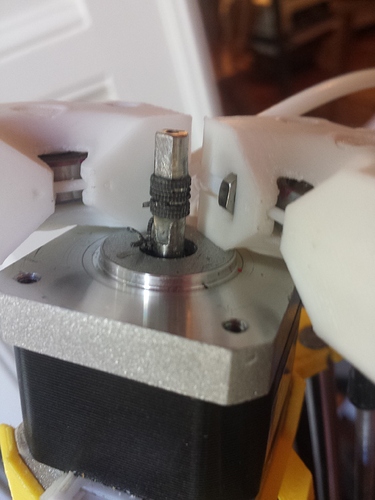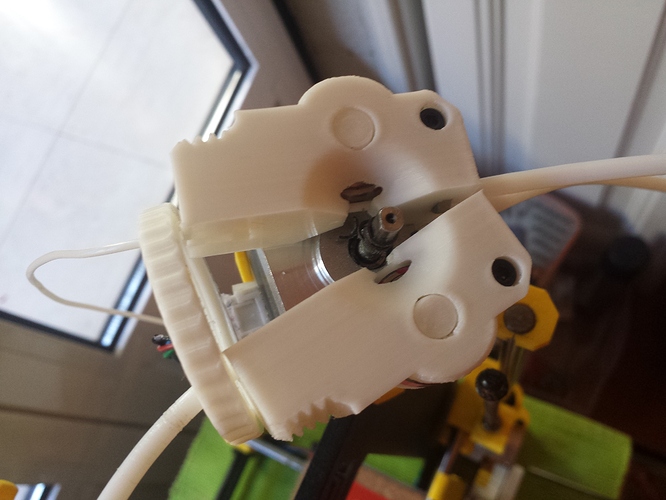Tests are running too well… Just destroyed my flint. Insane amount of torque!!!
I get a 404 error when trying to access your links. Private? Any Idea?
Much better!
I guess I need to make some shopping. Meanwhile, what I can share with is that:
- Even with the straight path, there still a significant amount of friction lost in the loop. I may have to optimise the position of the nuts (have them more loose to help self centering). It may be better in the way that finishing the part is easier, but I’ve changed the internal diameter, and not finishing is necessary (at least on my printer). Having a larger loop is likely to help as well;
- Still a little boring to load;
- Design is now completely symmetric;
- 3D printed thread are strong!
Sure, I had to copy the former version to get rid of some “history” due to some missteps learning to make conical threads… (tips: the trick is to avoid self-intersecting object).
Here it is:
https://cad.onshape.com/documents/129edb95bc9c4934b4db7ea0/w/1e4d9a93fd904d079b9921de/e/16c2d978658143f1a40c372a
By the way, 2 shells and 20% infill is enough.
Some thought about symmetry… It’s probably better to make the extruder work mostly in the direction in which the flint is winded around the stepper axle, only when retracting it’s working against the natural helix if the flint, but there should be minimal forces at that stage (only inertia and friction, no hot end to fight with).
0.2 is okay. Good compromise between layer adhesion and resolution.
I was wondering about that loop. To minimize friction, it may be necessary to control the curve to avoid sharp bends. Or is the friction unavoidable because of the force on the filament? Or is the friction in the 30 cm loop low enough?
Yes, mine is probably too short. Need to go shopping, don’t have more available at the moment.
What size tap?


